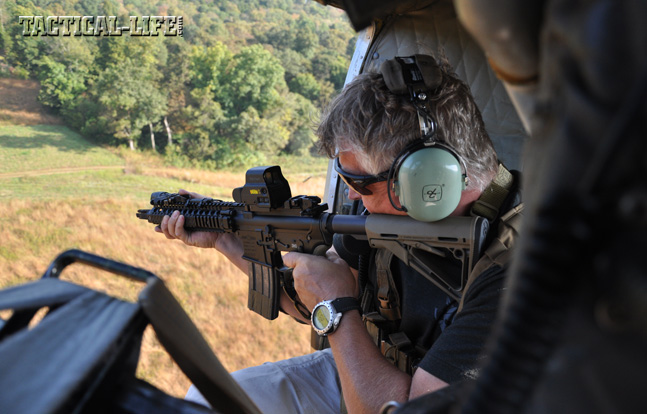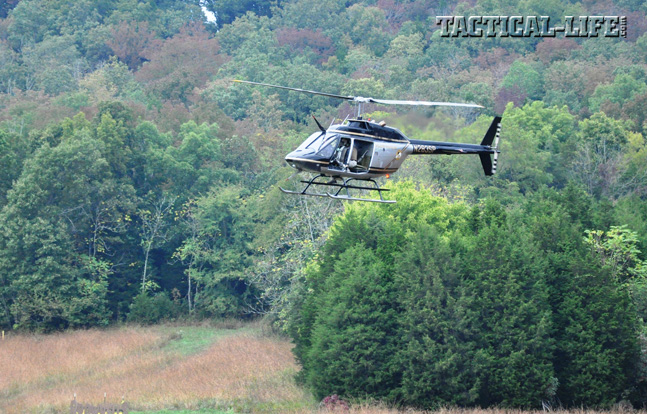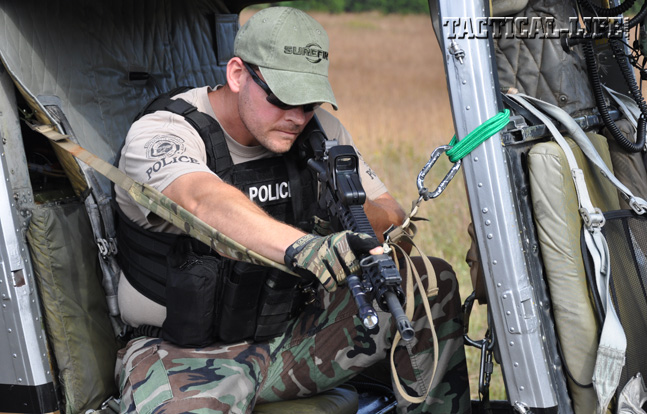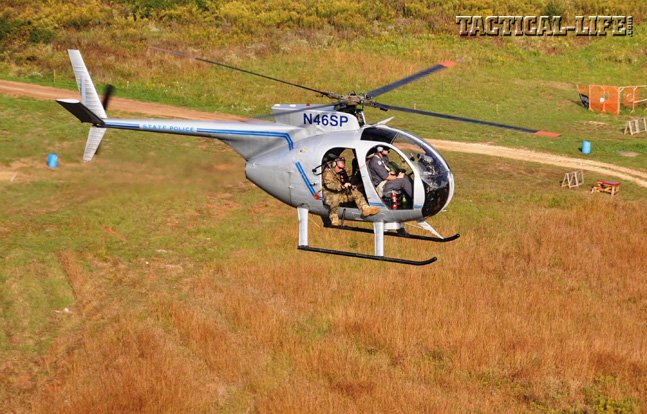In the upcoming May 2014 issue of GUNS & WEAPONS FOR LAW ENFORCEMENT, author Rob Garrett takes you into the skies for Greg Coker’s Helicopter Aerial Rifle Marksmanship (HARM) training.
He writes, “The HARM program of instruction consists of classroom and ground instruction as well as live-fire exercises from an aircraft. While the emphasis is on marksmanship techniques needed to engage a target from a moving aircraft, Coker is quick to point out that mission success is dependent on the coordination between the shooter and the pilot. Successful engagements are equally dependent on both flying and marksmanship skills.
“The initial ground phase of the training involves an in-depth briefing on flight profiles, safety procedures and the physics and ballistics of shooting from a moving aircraft. Options for rigging the aircraft and configuring weapons are also discussed in detail. Shooting at a stationary target from a moving platform, whether it is a boat, vehicle or aircraft, requires the shooter to aim behind the target. Instead of leading the target, the shooter ‘lags’ the target. Coker presents this concept in a very clear and concise manner that is easily understood. Students are given a proprietary ballistics chart that gives the shooter the proper lag based on airspeed and distance.
Advertisement — Continue Reading Below
“Anytime a shooter boards an aircraft, he becomes a member of the aircrew, and a critical portion of the training involves integrating the shooter with the pilot and the co-pilot or observer. Coker’s 5,000-plus hours of flight time with the 160th SOAR and his easy-going personality give him instant credibility with law enforcement aviators… For the shooter to be successful, the flight parameters must fit within a specific profile.”
To learn more, check out the May 2014 issue of GUNS & WEAPONS FOR LAW ENFORCEMENT, available on newsstands and digitally March 4, 2014. To subscribe, go to /guns-weapons-for-law-enforcement


























